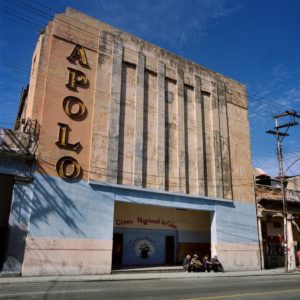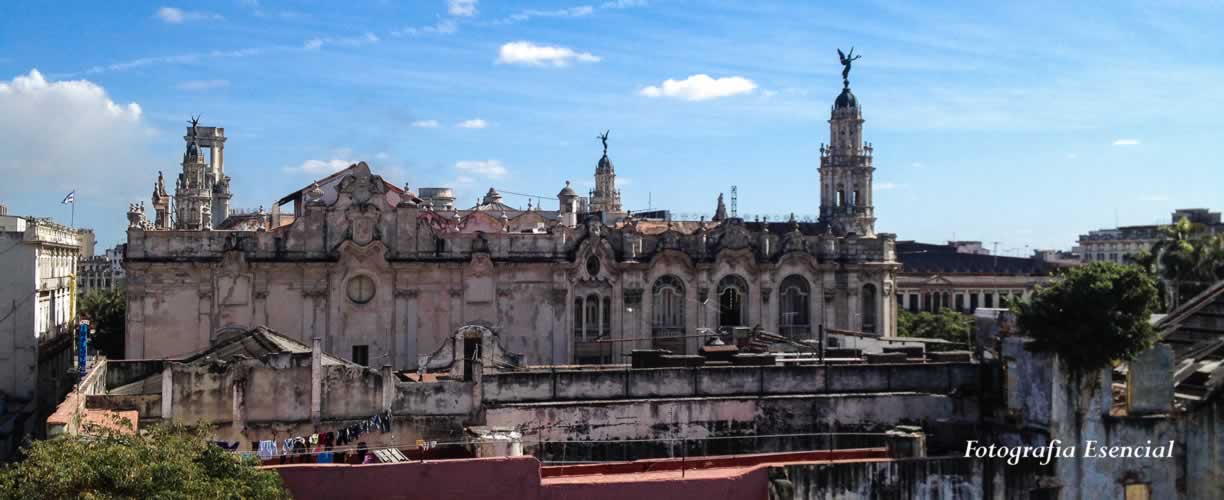 HISTORIA EN FOTOS DE LOS CINES DE CUBA.
HISTORIA EN FOTOS DE LOS CINES DE CUBA.
La cultura del cine ha tenido una larga historia en Cuba. Antes de que la Revolución Cubana se apoderara de la nación isleña en la década de 1950, Cuba albergaba más de 500 cines, más que la ciudad de Nueva York o París en ese momento. Poco después, el número de salas aumentó a casi 700, y muchas de ellas fueron construidas y administradas por importantes estudios de cine como 20th Century Fox, Columbia Pictures y MGM. En un momento en que los medios sociales estaban severamente limitados por un gobierno controlador, ir al cine se convirtió en un pasatiempo importante para los cubanos.
A lo largo de los años, el tiempo y la falta de fondos han afectado a estas estructuras históricas, y hoy solo unos pocos teatros permanecen en uso para su propósito original, mientras que otros han sido reutilizados o se encuentran en varios estados de descomposición.
En 1953, Cuba tenía 694 cines y teatros. La Habana sola tenía 134, más que Nueva York o París. En 2014, la fotógrafa documentalista con sede en Nueva York, Carolina Sandretto, se propuso encontrar y fotografiar, con una cámara de formato medio de la década de 1950, los cines restantes de esa época dorada. Este libro es el documento visual de su viaje.
Hubo un tiempo en que había más de 600 cines en Cuba, pero ahora solo hay 19 en funcionamiento. ¿Que pasó?
Cuando sucedió la Revolución Cubana, muchos propietarios de cines decidieron abandonar la isla. El gobierno se hizo cargo de la operación de sus negocios, pero administrar esa cantidad de cines era absolutamente imposible, por lo que el número de cines disminuyó lentamente. Los 19 que quedan se han actualizado al mundo digital actual, pero muchos de los otros han sido abandonados o convertidos en centros comunitarios, lugares para ancianos y centros para niños. A diferencia de otros países donde los cines fueron destruidos para hacer espacio [para nuevos edificios], en Cuba, debido a la burbuja histórica y al hecho de que no había dinero para gastar en [estos proyectos], muchos de los cines antiguos quedan en pie .
Cuba es un lugar muy peculiar, y ha tenido muchas influencias diferentes y diferentes tipos de arquitectura. Tienes los primeros teatros de ópera, luego los cines de principios de 1900, luego la era Art Deco y luego los años 30, 40, 50, 60 y 70, además de todas las transformaciones futuras de estos edificios. Es extremadamente interesante desde el punto de vista arquitectónico. Por ejemplo, el cine The Fenix es Art Deco, y ahora es un espacio vital. Además, The Ambassador es de la década de 1930, y fue revivido en la década de 1950. [En un momento tenía] un enorme [letrero de neón] con su nombre en la parte superior del edificio, pero eso ha sido destruido. En general, Cuba no ha tenido la oportunidad de cambiar [políticamente] durante períodos de tiempo, por lo que todas estas contaminaciones culturales diferentes [como los detalles arquitectónicos relacionados con cada época] lo convierten en un lugar muy interesante. Hay una herencia increíble allí y para ver todos estos diferentes tipos de arquitectura en un solo lugar, simplemente no puedo pensar en otro lugar en el mundo que tenga un espectro similar de arquitectura.
 HISTORY IN PHOTOS OF CINEMA INDUSTRY IN CUBA.
HISTORY IN PHOTOS OF CINEMA INDUSTRY IN CUBA.
Cinema culture has had a longstanding history in Cuba. Before the Cuban Revolution took hold of the island nation in the 1950s, Cuba was home to more than 500 cinemas—more than New York City or Paris at the time. Soon thereafter, the number of halls increased to nearly 700, with many of them constructed and managed by major film studios like 20th Century Fox, Columbia Pictures and MGM. At a time when social outlets were severely limited by a controlling government, going to the cinema became an important pastime for Cubans.
Over the years, time and lack of funding have taken their toll on these historic structures, and today only a handful of theaters remain in use for their original purpose, while others either have been repurposed or sit in various states of decay.
In 1953, Cuba had 694 cinemas and theaters. Havana alone had 134, more than New York or Paris. In 2014, New York-based documentary photographer Carolina Sandretto set out to find and photograph, with a 1950s medium-format camera, the remaining cinemas from that golden era. This book is the visual document of her journey.
At one time there were more than 600 cinemas in Cuba, but now there are only 19 still in operation. What happened?
When the Cuban Revolution happened, a lot of cinema owners decided to leave the island. The government took over operating their businesses, but running that amount of cinemas was absolutely impossible, so the number of cinemas slowly decreased. The 19 that remain have been updated to today’s digital world, but many of the others have been abandoned or converted into community centers, places for the elderly and centers for kids. Unlike other countries where cinemas were destroyed to make space [for new buildings], in Cuba, because of the historic bubble and the fact that there was no money to be spent on [these projects], a lot of the old cinemas are left standing.
Cuba is a very peculiar place, and it has had a lot of different influences and different types of architecture. You have the first opera houses, then cinemas from the early 1900s, then the Art Deco era, and then the ’30s, ’40s, ’50s, ’60s and ’70s—plus all of the future transformations of these buildings. It’s extremely interesting from an architectural point of view. For example, The Fenix cinema is Art Deco, and it’s now a living space. Also, The Ambassador is from the 1930s, and it was revived in the 1950s. [At one time it had] a huge neon [sign] with its name on top of the building, but that has been destroyed. Overall, Cuba hasn’t had the chance to change [politically] throughout periods of time, so all of these different cultural contaminations [such as the architectural details related to each era] make it a very interesting place. There’s an incredible heritage there and to see all of these different types of architecture in one place, I just can’t think of another place in the world that has a similar spectrum of architecture.
Agencies/ SmithsonianMag/ Internet & Carolina Sandretto Photos/ Excerpts/ Extractos/ Arnoldo Varona/ www.TheCubanHistory.com
THE CUBAN HISTORY, HOLLYWOOD.



 < HISTORY in Photos of the Cinema Industry in Cuba.
< HISTORY in Photos of the Cinema Industry in Cuba.






